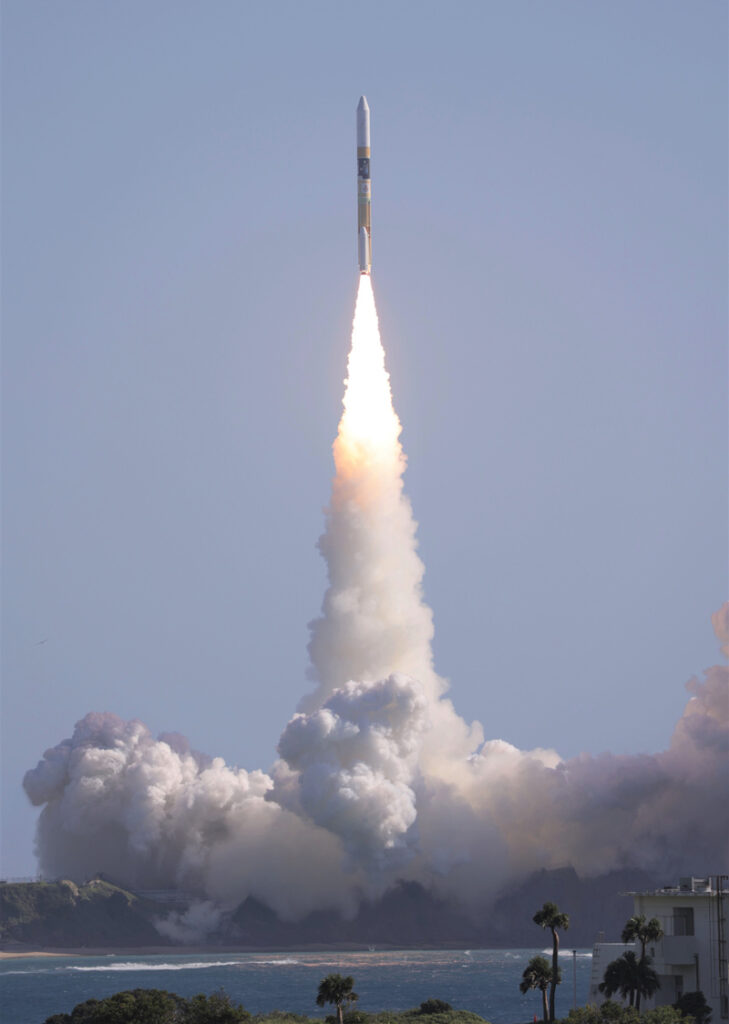Update 26 January 2024: SLIM landed roughly 55 meters east of the target landing site, meeting its precision landing goal. Its power died at 2:57 a.m. JST (12:57 p.m. EST) on 20 January after taking a few photos and small amounts of data with its onboard instruments. Before its descent, SLIM deployed two small probes, LEV-1 and LEV-2, which successfully performed maneuvers, communicated with each other and Earth, and captured photos of SLIM’s landing site. The photos confirm that SLIM did not land upright.
Today at 12:20 a.m. JST (10:20 a.m. EST), the Smart Lander for Investigating Moon (SLIM) spacecraft landed on the Moon. After landing, the spacecraft’s solar panels did not begin generating electricity, with the craft running on battery power that was expected to last several hours.
“Our landing precision is designed to be better than 100 meters,” said Shinichiro Sakai, SLIM’s project manager. JAXA is still calculating the achieved precision, but if it met its mark, that would be a 100-fold improvement over previous lunar landers, according to Sakai.
The mission, run by the Japan Aerospace Exploration Agency (JAXA), launched on 7 September 2023 from Japan’s Tanegashima Space Center. SLIM made Japan the fifth country to soft-land on the Moon, following the United States, the Soviet Union, China, and India.
A Lightweight with a Heavy Impact
SLIM landed near Shioli Crater, west of Mare Nectaris on the Moon’s nearside. The crater is roughly 270 meters wide and is located within a 3.8-billion-year-old impact basin. Lunar orbiters have previously detected olivine on the plain’s surface.
Depending on SLIM’s power status, scientists will use its multiband spectral camera to investigate the composition of the olivine, which is thought to have formed within the lunar mantle, according to Sakai.
Such observations could help researchers learn about the origin of the moon.
The mission also has two small rovers, one that hops and one that runs, to measure the site’s temperature and radiation levels, photograph the landing site, communicate with Earth, and test the functionality of different rover designs. Both rovers successfully separated from the lander and sent signals back to Earth.

The landing site near Shioli Crater was chosen not just for scientific potential. The site has a 15° slope, rather than being mostly flat, and has scattered rocks, to test SLIM’s high-precision and obstacle-avoidance landing technologies.
SLIM’s landing system uses vision-based navigation adapted from facial recognition technology. It used maps of lunar craters to determine its position before landing, pointing its camera at the surface and comparing the cratering patterns it saw with crater maps stored in its memory system.

Other spacecraft have demonstrated similar landing techniques in the past, for example, NASA’s OSIRIS-REx (Origins, Spectral Interpretation, Resource Identification, and Security–Regolith Explorer), which grabbed a sample of asteroid Bennu from an area approximately 8 meters wide that was surrounded by large boulders. SLIM brought this landing precision to the Moon. With these improvements, “humans will make a qualitative shift towards being able to land where we want and not just where it is easy to land,” according to the mission’s website.
SLIM, a boxy machine 11 cubic meters in size, is also more lightweight than previous lunar landers, at just 210 kilograms at landing. China’s Chang’e-4, which landed on the Moon’s farside in 2019, weighed approximately 1,200 kilograms.
Generally, lighter spacecraft can be cheaper to develop and can fly on rockets that are smaller, cheaper, and easier to launch, Sakai said. SLIM cost approximately $100 million. That could reduce barriers to space missions and allow new players to explore the Moon and throughout the solar system.
JAXA said it will release more detailed information in a week on SLIM’s potential science output and its ultimate fate.
—Kimberly M. S. Cartier (@AstroKimCartier), Staff Writer
Correction 26 January 2024: The name and location SLIM’s landing site has been corrected.

